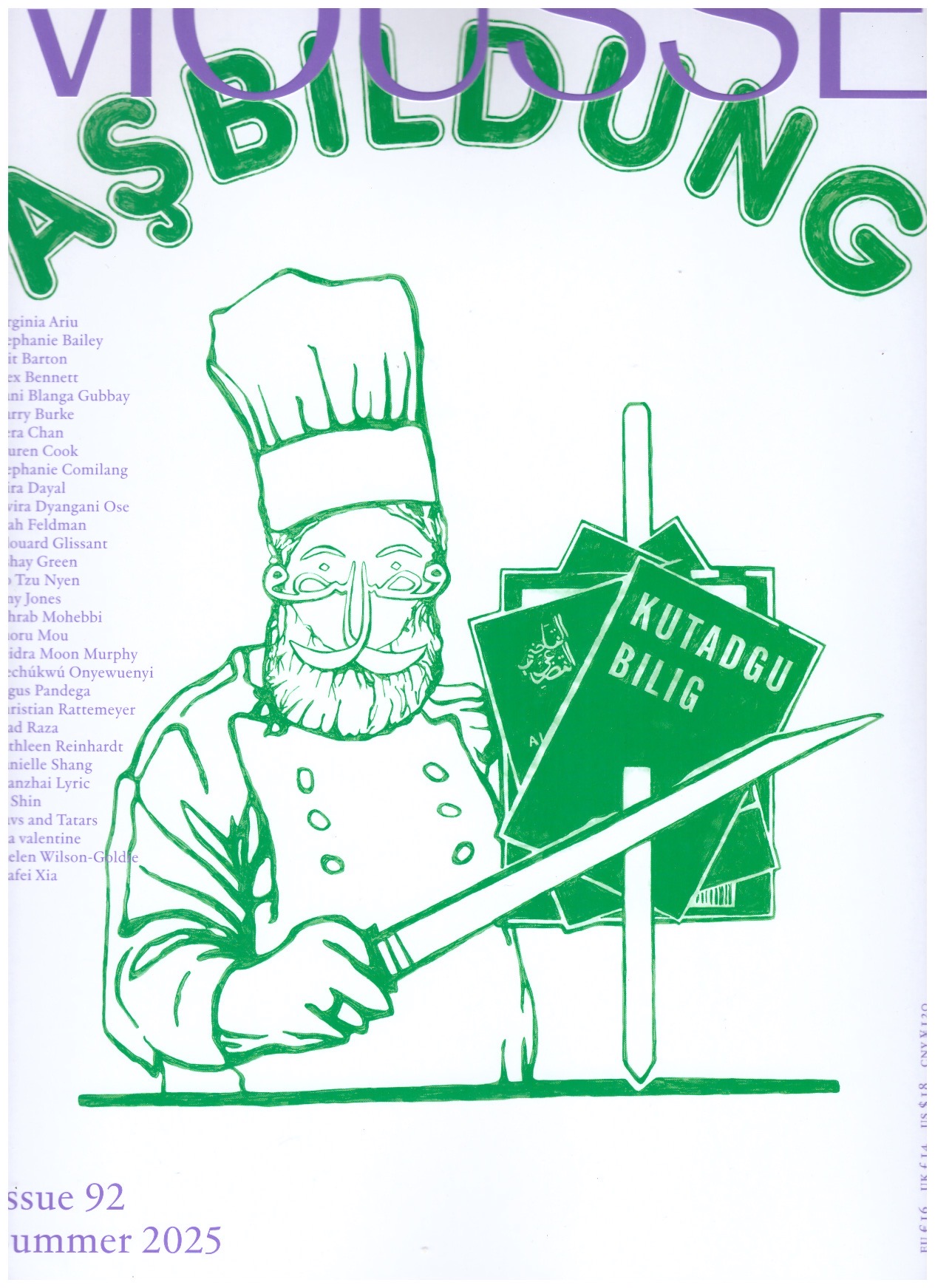CASAVECCHIA, Barbara (ed.)
Mousse #92
Dear readers,
It was 1987 when A Logo for America, Alfredo Jaar’s best-known public art project, first appeared on a giant Spectacolor light board in Times Square, New York. The thirty-five-second animation opens with a map of the United States, with the text “THIS IS NOT AMERICA” superimposed. The mobile meaning of the word “America”—as Florencia San Martín explains in her essay on Jaar in The Routledge Companion to Decolonizing Art History (2024)—has been constantly expanding ever since, with an escalation linked to the MAGA (Make America Great Again) campaign and (two-time) president Donald Trump’s rhetoric. “Implying that the US (a country) is America (a region), this approach is precisely what Jaar negates,” San Martín argues. Art and language have the power to disrupt unifying narratives.
Regions (for instance Eurasia and Southeast Asia) surface often in this issue—across arts, tales, and gatherings of individuals and meanings—as a possibility to bypass the borders of nation-states and the meta-geographies of colonial modernity. Regions d’être (2009–ongoing) is an extended body of work by the collective Slavs and Tatars, the subject of our Survey, whose members are “joyously obsessed with monobrows, glottal stops, multilingualism, geopolitical complexity, religious heretics, obscure satirical journals, and the long-forgotten but oddly compelling tricksters who edited them with flourishes of love, mischief, and subversion,” as Kaelen Wilson-Goldie writes in these pages. “Hagamos Mongolia Grande de Nuevo” (Make Mongolia Great Again) proclaims one of their maps from 2016. In the panel conversation, Payam Sharifi, Slavs and Tatars cofounder, stresses the importance of commonalities at their Pickle Bar, a space where, instead of communication without community, community without communication may ensue—an idea he borrows from philosopher Byung-Chul Han.
Language—its hierarchies, its excesses, and its overwhelming, sometimes delightful nonsense, reflecting “an experience of incoherence” (per Shanzhai Lyric)—rules, of course. Asad Raza recalls Édouard Glissant’s definition of the endless transformation of language as créolisation, as well as his poetic “insistence on the particular, the local, and the weird.” In proposing the “atmospheric” as a category for current spatial practices that distribute agency between human and more-than-human agents, Sohrab Mohebbi interprets sensory overload as a means to dissolve the subject so as “to see whether it might be reconstituted differently.” In imagining a new, “possible museum,” Elvira Dyangani Ose positions collectivity as the nucleus of a network of concentric circles around which all the activities, missions, and futures of the institution must revolve.
Let’s share drinks and food; let’s share pages. Henry Martin, whose collection of writings is highlighted in our Books column, once said that artist Ray Johnson’s work “is about relationships between people and about the objects that mediate relationships between people. And he assumes a relationship wherever he sees a possible mediation.”
Here’s to sharing more.
—Mousse
Published by Mousse Publishing, 2025
Periodicals / Art Criticism
